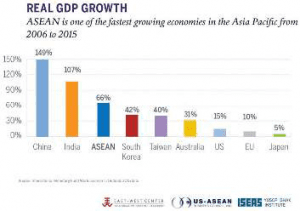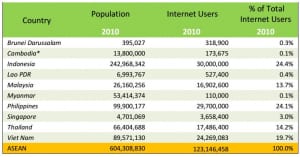A Resilient ASEAN?: ASEAN and Resilience in Natural Disaster
By Nisrina Husnul Khotimah and Kevin Iskandar Putra (Picture: Aris Daeng)
People in Palu and its surrounds are still struggling to survive a month after the 7.5 magnitude earthquake and subsequent tsunami had struck. As of Friday 26th October 2018, the ASEAN Coordinating Centre for Humanitarian Assistance (AHA) has recorded a total of 2,081 fatalities – a large and dense number for the affected area. Locals and international news agencies were quick to realise that human resources and humanitarian aid did not come quickly enough and hastily turned their attention towards ASEAN as they questioned their role in rescue operations. The high number of deaths is a red flag that signalled that ASEAN is still not resilient towards natural disasters and much assessment is needed on the regional organisation’s response to these events.
This article intends to examine the ASEAN Coordinating Centre for Humanitarian Assistance (AHA) – the body that was mostly involved in efforts to recover Palu and past post-natural disaster operations –under the intention to understand why ASEAN’s response was not evident until almost a week after the tsunami struck. This article also intends to critique the placement of natural disasters in ASEAN’s communities’ blueprints, emphasising how natural disasters should be seen as a security issue rather than a socio-cultural one. Finally, this article would like to propose the rudiments of what could possibly be an addition to the AHA that could improve their agility in terms of action.
The ASEAN Coordinating Centre for Humanitarian Assistance on disaster management serves as a platform for intergovernmental efforts in cooperating and coordinating the ASEAN Member States, with the United Nations for disaster management and emergency response in the region. There are some frameworks used as the basis to run the organization, which entail Disaster Monitoring, Preparedness and Response, and Capacity Building; all playing their respective important role. As another focus, AHA also developed its Emergency Operations Centre (OEC), shedding an integral part of the importance of collective response. Through the Web Emergency Operations Center (WebEOC), an online-based platform that AHA provides, the organisation intends to provide a mechanism to monitor and share the information related to regional disasters.
ASEAN’s inadequate response towards, and involvement in, the aftermath of the tsunami in Palu is a clear illustration of the organisation’s lack of political willingness to clamp regional cooperation. Not only does this allow us to question why there is a lack of urgency, but it also allows us to identify issues in its institutional structure as well. Areas of concern include the fact that disaster management is under the socio-cultural community blueprint in which we believe would be most suitable if it were under the political-security community blueprint instead.
Placing disaster management under the socio-cultural community blueprint has many relatively troubling implications. Primarily, it indicates that ASEAN sees disaster management as an opportunity to “lift the quality of life of its peoples through [people-orientated] activities”, as stated in their ASCC Blueprint 2025, rather than a means to prevent conflict and instability – which could easily arise after a natural disaster hit. Disaster management in the socio-cultural community blueprint, thus far, has only attempted to enhance the capacity of communities to adapt to vulnerabilities through people-centred initiatives such as the provision of resources and management support, as exemplified by what was reported in AHA’s situation updates on the Palu tsunami and also other post-natural disaster situations such as Typhoon-Mangkhut.
As one could deduce, there is still a need for a troop-based response from this regional organisation. It is important to realise that natural disasters represent a very major threat to security of human life. Allowing the wounds of a natural disaster to linger for an extended period of time without recovery would allow a plethora of other security issues to penetrate the affected area. Security issues such as the displacement of people, increasing population density elsewhere and cross-border migration are easily in the foresight of post-natural disaster consequences and all possess “the potential for instability and conflict…conflict due to scarcity”. With this in mind, it is imperative for ASEAN to see natural disasters as, not only an urgency, but a threat to its well-guarded peace.
In addition, another reason why disaster management should be a part of the political-security community blueprint lies on the fact that ASEAN’s harmonious environment is easily at risk when natural disaster strikes. This was especially evident during the haze crisis in 1997 where winds swept acrid smoke across Brunei, Malaysia, Singapore and Thailand, causing these countries to confront Indonesia after they were unable to cope with the disaster due to the Asian Financial Crisis happening at the same time. From here, one could identify the lack of regional cooperation as they turned to denouncement rather than incentives to undertake the haze crisis together as member states of the same organisation. A regional effort is therefore critical so that every member state has a stake in relief operations and preventive measures.
Relating back to the aftermath of the tsunami in Palu, such regional effort was evidently absent in relief operations. Based on situation updates provided by the AHA, most actions taken and resources mobilised were done by the Indonesian government. It was not until situation update no. 9, out of fifteen, where one could read about responses from other ASEAN member states (which, in situation update no. 9, was humanitarian assistance from the Philippines and Singapore, and a THB 5 million contribution from Thailand). Moreover, what could also be revealed from the situation updates was the fact that most operational management was done by the Indonesia’s National Board of Disaster (BNBP), indicating that a great deal was being handled by Indonesia alone and ASEAN only served as a subsidiary force of aid.
ASEAN’s, as a regional organisation, involvement in the Palu tsunami aftermath was primarily done through the AHA. Although it did coordinate resources and activities done by incoming NGOs through the ASEAN-Emergency Rapid Assessment Team (ASEAN-ERAT), it is still better described as a management body comprised of experts from different organisations. This further emphasises the fact that ASEAN’s disaster management is still socially oriented as its motions are dependent on other actors’ proposal of actions.
This calls for an enhancement in ASEAN’s framework of the ASEAN Agreement on Disaster Management, in which we propose an ASEAN-Emergency Operation Team (ASEAN-EOT) that is able to conduct rescue operations and provide human resources in order to ease access for medical personnel to disaster-stricken areas in the Southeast Asian region. ASEAN-EOT would be established by ASEAN itself, giving the AHA the power to oversee and coordinate collective action. ASEAN-EOT would be composed of experienced and trained military personnel from all 10 countries of ASEAN, training together specifically for disaster rescue missions.
Military personnel will remain members of their respective national forces as the ASEAN-EOT does not intend to act as an independent “ASEAN force”, but rather a collective-action unit for disaster operations. With the existence of this unit, we should expect ASEAN to be one of the first actors to respond to a natural disaster, increasing humanitarian aid and consequently reducing the amount of possible deaths. With the information collected and coordinated by AHA, the ASEAN-EOT should effectively know how much military personnel and air transportation is needed within a realistic time-frame of 48 hours.
From our analysis, it could be concluded that ASEAN’s agility and involvement in natural disaster rescue and relief operations remain inadequate. This article theorised that placing disaster management under the socio-cultural community has many worrying implications as it implied that ASEAN treated post-natural disaster situations as an opportunity to improve quality of life rather than a threat to their security and peace.
Therefore, we suggest to put natural disasters under the political-security community, allowing us to also propose what could be a potential ASEAN-Emergency Operation Team. This team serves as a collective-action unit under the oversight of AHA, ensuring that ASEAN would be one of the first actors to respond when natural disaster strikes in the Southeast Asian region. Such unit would not only enhance the ASEAN’s agility in terms of response, but it would also reduce the number of subsequent fatalities due to quick responsiveness. Failure to improve their natural disaster management framework would inevitably deteriorate the international stature of ASEAN states.
References:
AHA Centre Situation Update No. 15 – FINAL: M 7.4 Earthquake and Tsunami, Sulawesi, Indonesia – Friday, 26 October 2018, 12:00 hrs (UTC+7), AHA, https://reliefweb.int/report/indonesia/aha-centre-situation-update-no-15-final-m-74-earthquake-and-tsunami-sulawesi
“About the AHA Centre”, The AHA Centre, https://ahacentre.org
“What we do”, The AHA Centre, https://ahacentre.org/what-we-do/
A Strategic Framework for ASEAN-UN Cooperation, UNESCAP, https://www.unescap.org/sites/default/files/Session%201.%20Cooperation%20in%20Southeast%20Asia.pdf
“Introduction.” in ASEAN Socio-Cultural Community Blueprint 2025. Jakarta: The ASEAN Secretariat, March 2016.https://www.asean.org/wp-content/uploads/2012/05/8.-March-2016-ASCC-Blueprint-2025.pdf
The UK UN delegation in a debate on impact of climate change on peace. Hough, Peter. “Environmental Security.” in International Security Studies, ed. Peter Hough et al. 211 – 224. New York: Routledge, 2015.
Nguitragool, Paruedee. “Negotiating the Haze Treaty: Rationality and Institutions in the Negotiations for the ASEAN Agreement on Transboundary Haze Pollution (2002).” Asian Survey 51, no. 2 (2011): 356-78. doi:10.1525/as.2011.51.2.356.
AHA Centre Situation Update No. 9: M 7.4 Earthquake and Tsunami, Sulawesi, Indonesia – Monday, 8 October 2018, 17:00 hrs (UTC+7), AHA, https://reliefweb.int/report/indonesia/aha-centre-situation-update-no-9-m-74-earthquake-and-tsunami-sulawesi-indonesia






